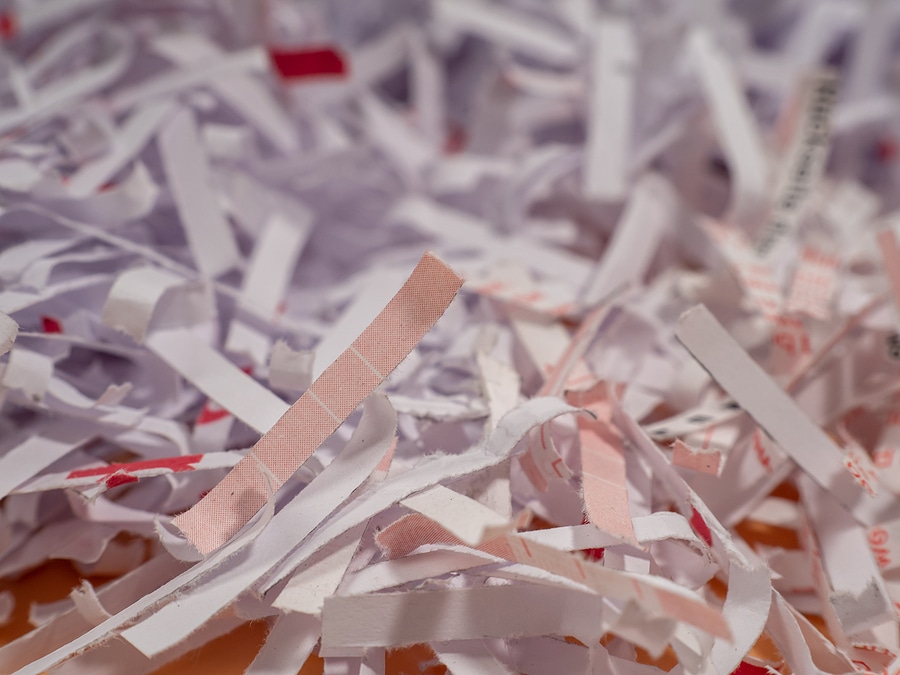Avoid These 5 Common Document Shredding Mistakes

In today’s data-driven world, protecting sensitive information is more important than ever. If your business handles any amount of confidential data — whether pertaining to employees, job applicants, or customers — it’s crucial to have proper document shredding practices in place to prevent security threats such as data breaches and identity theft. However, even with the best intentions, mistakes can happen.
Five common document-shredding mistakes and how to avoid them.
1. Shredding Only Some Documents
One common mistake businesses make is choosing to shred only a portion of what should be shredded. Most companies know to shred documents with any personally identifying information, such as social security or bank account numbers. But businesses overlook other sensitive data that deserves the same kind of treatment, like confidential business reports or data, client lists, and vendor contracts. It’s important to implement a comprehensive document destruction policy that oversees the shredding of all documents that are no longer needed.
2. Holding Onto Documents Longer Than Necessary
Holding onto documents longer than is required can increase the risk of data breaches and non-compliance with data protection regulations. Hanging onto documents also clutters office space and increases the risk of misplacing or giving people unauthorized access to sensitive information. Your company should have a clear document retention policy that outlines exactly how long different types of documents should be stored to ensure that all papers with sensitive information are shredded or otherwise properly disposed of when no longer needed.
3. Improperly Disposing of Shredded Materials
Another common mistake companies make is simply tossing shredded documents into their communal trash cans and throwing them out with the rest of the trash in the regular dumpster. But shredding is only one facet of document destruction and disposal. After documents are shredded, improper disposal can still leave them vulnerable to unauthorized access.
4. Not Properly Training Employees
Many businesses fail to establish and document clear shredding policies and procedures. This can result in inconsistent or inadequate shredding practices, increasing the risk of data breaches and compliance violations. It’s important to have documented shredding policies and procedures in place and to thoroughly train each employee on the best practices regarding document shredding. This includes understanding which documents should be shredded, how to properly use shredders, and how to handle shredded materials.
5. Relying on Office Shredders
Many businesses use office shredders for their daily shredding needs. However, relying solely on these machines can be a mistake. Office shredders are often not as secure as the industrial-grade shredders used by professional shredding and data destruction companies. Office shredders may leave documents only partially shredded or may not be able to handle large volumes of paper, leading to inefficiencies and potential security breaches.
Professional Shredding and Data Destruction You Can Count On
The best way to avoid many of the common pitfalls of document shredding is to count on verified shredding professionals. At SEAM, our extensively trained and experienced team is ready to help your North Dakota or South Dakota company keep up with your data destruction needs. For document shredding that meets stringent regulations and industry standards, reach out to our team today.
SEAM provides IT recycling and data destruction services including onsite shredding and hard drive wiping to South Dakota, North Dakota, Minnesota, Iowa, and Nebraska.
Schedule a pickup or contact us for more information.





